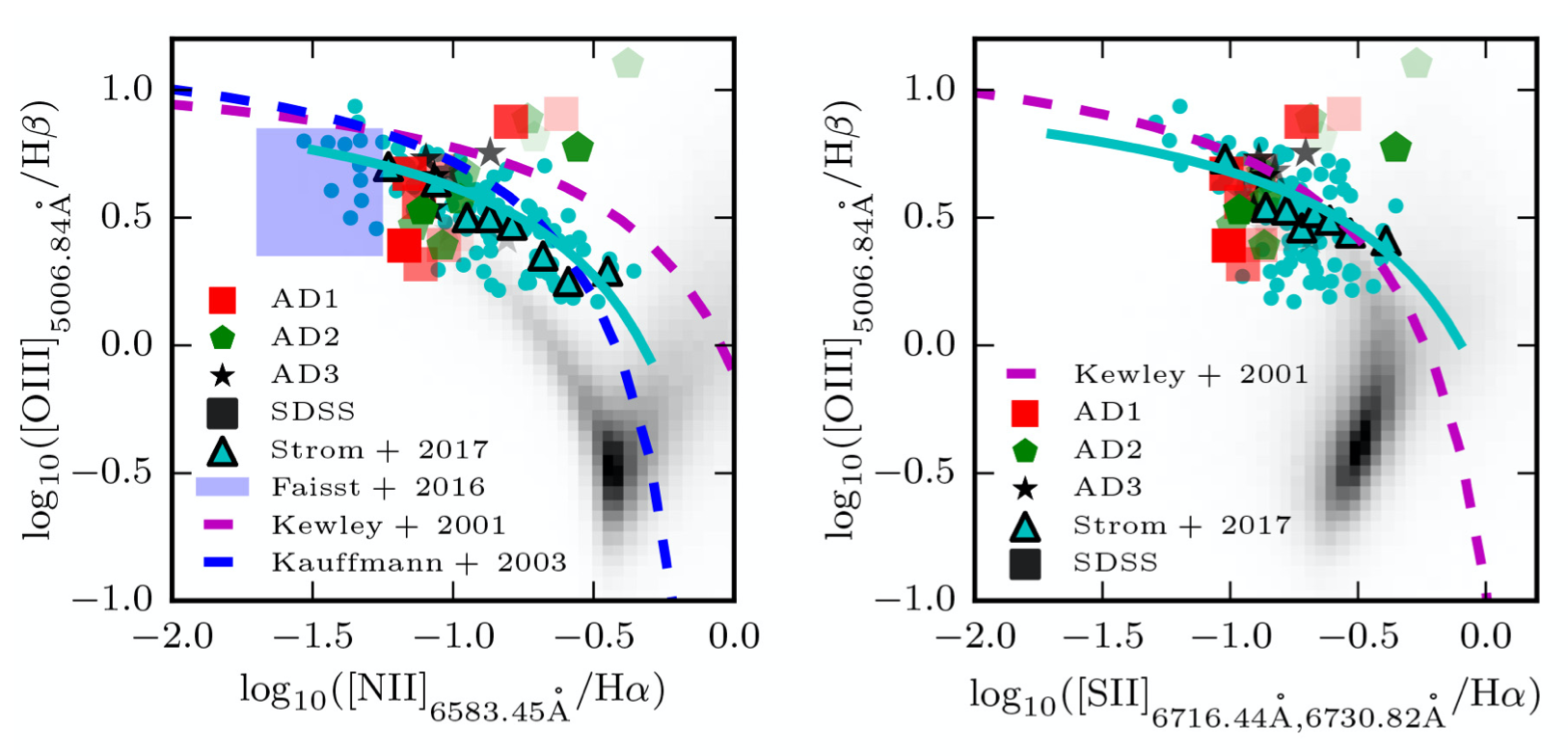- 제목
- Probing cosmic dawn with emission lines: predicting infrared and nebular line emission for ALMA and JWST
- 작성일
- 2020.04.07
- 작성자
- 김태선
- 게시글 내용
-
Probing cosmic dawn with emission lines: predicting infrared and nebular line emission for ALMA and JWST
국문: 우주 초기 은하의 열역학적 상태를 연구할 수 있는 적외선 및 자외선 방출선 예측
Authors: Katz, Harley; Galligan, Thomas P.; Kimm, Taysun; Rosdahl, Joakim; Haehnelt, Martin G.; Blaizot, Jeremy; Devriendt, Julien; Slyz, Adrianne; Laporte, Nicolas; Ellis, Richard
Publication: Monthly Notices of the Royal Astronomical Society, Volume 487, Issue 4, p.5902-5921
Abstract
Infrared and nebular lines provide some of our best probes of the physics regulating the properties of the interstellar medium (ISM) at high redshift. However, interpreting the physical conditions of high-redshift galaxies directly from emission lines remains complicated due to inhomogeneities in temperature, density, metallicity, ionization parameter, and spectral hardness. We present a new suite of cosmological, radiation-hydrodynamics simulations, each centred on a massive Lyman-break galaxy that resolves such properties in an inhomogeneous ISM. Many of the simulated systems exhibit transient but well-defined gaseous discs that appear as velocity gradients in [C II] 157.6 μm emission. Spatial and spectral offsets between [C II] 157.6 μm and [O III] 88.33 μm are common, but not ubiquitous, as each line probes a different phase of the ISM. These systems fall on the local [C II]-SFR relation, consistent with newer observations that question previously observed [C II] 157.6 μm deficits. Our galaxies are consistent with the nebular line properties of observed z ∼ 2-3 galaxies and reproduce offsets on the BPT and mass-excitation diagrams compared to local galaxies due to higher star formation rate (SFR), excitation, and specific-SFR, as well as harder spectra from young, metal-poor binaries. We predict that local calibrations between H α and [O II] 3727 Å luminosity and galaxy SFR apply up to z > 10, as do the local relations between certain strong line diagnostics (R23 and [O III] 5007 Å/H β) and galaxy metallicity. Our new simulations are well suited to interpret the observations of line emission from current (ALMA and HST) and upcoming facilities (JWST and ngVLA).
https://ui.adsabs.harvard.edu/abs/2019MNRAS.487.5902K/abstract

- 저자명
- Taysun Kimm
